Plenary Programme - Friday 3 May
The demands on clinicians today to provide predictable, long-term results with dental implants for their patients are extremely high. Not only are there tremendous demands for success with dental implants but also extremely high expectations for aesthetic results. The functionality of dental implants long-term is well established and improving with the progress made with biomaterials and computer technology. However, the other demand, that of acceptable aesthetic results, is far more unpredictable as far as clinical outcomes are concerned. To achieve high-end aesthetics, the experienced clinician is required to develop the proper treatment sequence through a thorough understanding of what the patient’s deficiencies are at the beginning of treatment. Problems will arise if the clinician is not aware of the best biologic material or surgical technique, complications will occur with the restorative/surgical treatments and the outcome will be severely compromised. This presentation will highlight surgical and biologic complications through review of case scenarios and management of the complications. Emphasis will be placed on meeting patient expectations and long-term stability with the treatment outcome.
Learning Objectives
- To understand which augmentation techniques are most successful in regenerating bone contours and volume for ideal implant positioning
- To fully appreciate the need to perform proper work-up and diagnostic studies, determine the appropriate surgical treatment for severely resorbed alveolar ridges
- To expose complications associated with grafting procedures and biologic materials used in the grafting technique
- To provide tips/recommendations on how to minimise complications and failures with advanced/complex surgical procedures used in reconstruction of the deficient alveolar ridge
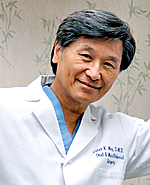
Dr Moy limits his practice to Oral & Maxillofacial Surgery, focusing on surgical aspects of Implant Dentistry and reconstruction of the severely atrophic alveolar ridge. A Professor in the Department of Oral & Maxillofacial Surgery at UCLA, he is also Director of Implant Dentistry, as well as the Straumann Surgical Dental Center and Nobel Biocare Surgical Fellow Program. Dr Moy was recently named the Nobel Biocare Endowed Chair in Surgical Implant Dentistry in the School of Dentistry, UCLA. He belongs to several professional organisations including the American Association of Oral & Maxillofacial Surgeons, American Academy of Esthetic Dentistry, a Fellow of Pierre Fauchard Academy and a Fellow of the Academy of Osseointegration, where he currently serves as Immediate Past President. He is an associate editor for the International Journal of Oral & Maxillofacial Implants and reviewing editor for International Journal of Oral & Maxillofacial Surgery, Clinical Implant Dentistry & Related Research and Oral Surgery, Oral Medicine, Oral Pathology, Oral Radiology and Endodontology. He has written numerous articles and book chapters on surgical augmentation procedures, management of medically compromised implant patients, the use of rhBMP-2 for maxillary sinus grafting and immediate loading of dental implants, culminating in the publication of the textbook, “Immediate Function & Esthetics in Implant Dentistry”, Quintessence International. He has lectured extensively nationally and internationally, most recently at the 27th Annual Meeting of Academy of Osseointegration in Phoenix, Arizona. Dr Moy maintains his private practice in the West Coast Oral & Maxillofacial Surgery Center in Brentwood, California.
The Maxillary Sinus is one of the most predictable sites for augmentation. The anatomical location of the maxillary sinus and its proximity to vital structures reinforces the need for careful and methodical planning for the prevention of complications. This presentation will be based on the classification of complications into preoperative, intra operative and post-operative along the treatment timescale. A protocol for the avoidance and techniques for the management of these complications including haemorrhage, sinus lining tears and infection as well as graft failures will be discussed.
Learning Objectives
- To address the avoidance of complications by appropriate diagnostic procedures, surgical technique and post-operative care
- To discuss how to deal with membrane tears
- To discuss conditions leading to unexpected intraoperative and post-operative haemorrhage as well as its management
- To look at factors leading to the non-conversion of the graft
- To offer expert advice and tips on the subject
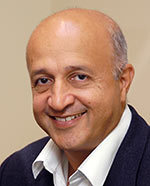
Dr Sethi has pioneered, in the UK and internationally, the art and science of surgical and restorative implant dentistry since 1979. His referral practice is totally dedicated to implant dentistry achieving outstanding success rates in terms of predictability as well as aesthetic and functional outcome. He is founding member and past chairman of the Association of Dental Implantology (ADI) of Great Britain. He is an elected member the IAOFR (International Academy of Oral and Facial Rehabilitation). Dr Sethi is a Board Member of the Faculty of General Dental Practice.
He has conceived and is the Programme Director of the Diploma in Implant Dentistry, of the Royal College of Surgeons of England. Dr Sethi has published broadly culminating in the bestselling textbook “Practical Implant Dentistry" (co-authored with Dr. Thomas Kaus) which has been translated into 10 different languages.
A risk management protocol when placing osseointegrated implants in the posterior mandible is a sensible precaution for reducing the risk of nerve damage or possible perforation of the floor of the mouth and of course the risk of possible litigation. This presentation identifies the need for careful treatment planning and the use of relevant special tests for example the CT Scan. A protocol will be presented that suggests the use of certain procedures to reduce the risks including nerve damage.
These will include:
- The type of incision
- The type of anesthetic
- X-rays as you proceed
- Type of implant
- Use of anti-inflammatories
Learning Objectives
- To discuss the scope and severity of the complications in the posterior mandible
- To discuss incidence of complications in the posterior mandible
- To discuss how to minimise complications
- To discuss the protocol and to offer expert advice and tips
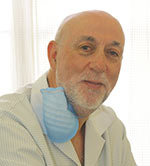
Professor Scher graduated from University College Hospital, London, UK in 1973. He is registered on the GDC Specialist List in Oral Surgery and Prosthodontics. He is a Visiting Clinical Professor at the Prosthodontic and Implant Department, Temple University, Philadelphia, USA. He is also a Member of Faculty at Lyon University, France, and an Honorary Senior Lecturer in Dental Implantology, School of Health Care Professions, University of Salford, UK. and Honorary lecturer at the Eastman Dental Hospital.
Professor Scher is a Fellow and Diplomate of the ICOI, and a Director on its Board. He is also a founder member and past President of the Association of Dental Implantology, UK, and still serves as an elected board member. He also holds a Diplomate from the American Society of Osseointegration. He is the Director of the Osseointegrated Year Course (now in its 20th year), and is the chairman of the editorial board of Implant Dentistry Today.
He is published extensively in refereed journals. Professor Scher was Scientific Chairman at the ADI International Symposia in 1989 and 1991, and was Host Chairman of the ICOI World Congress XI, 1992. He has also been Scientific Chairman of ICOI World Congress August 2003 and 2004; Scientific Chairman of ADI International Congress in May 2003; Scientific Chairman of Nobel Biocare Conference in September 2006; and Scientific Chairman of ADI International Congress in May 2007. He is President of Alpha Omega UK 2008/9.
Thanks to technological advances, modern implants achieve very high levels of survival with relatively low risk of technical complications. However, surgical and restorative complications do still occur. Human Factor often plays a major role in accidents and unwanted events in life and it is argued that this may also lead to problems in implant surgery. It is estimated that 50% of the unwanted surgical complications such as damage to adjacent vital structures could be avoided at time of implant placement by application of certain protocols or procedures such as the use of shorter implants in the mandible.
Major bone grafting for the reconstruction of atrophic jaws is complex, time consuming, expensive and requires resources. Furthermore, such treatment is not with the capability of most practitioners. The goal of the lecture is to demonstrate that, in atrophic jaws, short implants could be used routinely with a high success rate and better biomechanical prognosis.
Learning Objectives
- To define short implants and briefly discuss all available options when the residual bone volume is less than adequate to accommodate standard implants of adequate length
- To discuss indications and contra-indications for short implants
- To provide protocols for short implants
- To discuss, with reference to the literature, the success of short implants placed in native bone vs implants placed in grafted bone
- To conclude with expert advice and tips on the subjects
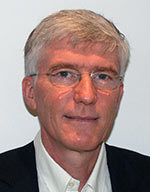
Dr Renouard graduated from the Dental University of Paris V in 1982. He was the assistant of Jean-François Tulasne in the Cranio-Maxillo-Facial Team of Paul Tessier from 1983 to 1988 in Paris. He has published several national and international articles and is author of two textbooks with Bo Rangert. The first one, "Risk Factors in Implant Dentistry: Simplified Clinical Analysis for Predictable Treatment", was published in 10 languages. He lectures intensively on Implants, Immediate Loading, Biomechanics and Bone Grafting procedure.
Dr Renouard was elected to the European Association for Osseointegration executive board in Amsterdam in 2000, and is the Immediate Past President-for the organisation (2006-2008). He is an active member of the Academy of Osseointegration. He is in private practice in Paris of Oral and Implant Surgery. He is visiting Professor at the Medicine Faculty of Lieges, Belgium.
The author’s findings, published in BDJ (June 2012), revealed that patient consent and information, pre-operative planning and appropriate post-operative referral were inadequate in patients who have suffered IAN damage during implant surgery. The aim of this presentation is to present data regarding demographics, pre-, intra- and postoperative management, resultant neurological deficit and quality of life measurements of these cases and discuss improvements to current practice.
Learning Objectives
- To discuss the incidence of nerve damage in the posterior mandible
- To examine the signs and symptoms and implications of nerve damage
- To discuss the diagnosis of nerve damage including classification
- To look at management strategies for different types of nerve damage
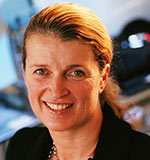
Professor Renton (Specialist in Oral Surgery) is a dentist with a particular interest in trigeminal nerve injuries and pain. After completing her Oral and Maxillofacial surgical training in Melbourne Tara undertook a PhD in Trigeminal nerve injury at KCL 1999-2003. She was later appointed Senior Lecturer at QMUL and then was awarded her chair in 2006 at Kings College London. Over the past three years Tara has developed a National clinical service for patients with trigeminal nerve injuries and orofacial pain.
She leads the teaching of over 500 dental students for each year (BDS 3, 4 and 5). She has also established an academic training programme which now has eight Oral Surgery SpRs of which three are undertaking PhD. She supervises two other PhD students working on pain collaboration with Wolfson Institute (KCL), Peripheral neuropathy Unit (Imperial College) and Centre of Neuroscience Imaging (IoP KCL).
Through these collaborations we have established an international leading programme of trigeminal pain research and education. Professor Renton has over 50 peer-reviewed publications and is Editor of BDJ books in Oral Surgery and Local anaesthesia and a Dental update book on Pain. She is the National advisor for Oral Surgery, a council member for BAOS and an elected member of the RCS England Dental Faculty Committee.
Success doesn't come only from how good we are technically or surgically. Understanding the patient's expectations and adapting it to the limitations of the case through efficient visual communication is paramount. The goal is to design a smile that fits the patient's functional, aesthetic and emotional needs and desires. Even the most advanced modern techniques or materials could prove to be disappointing if the final outcome doesn’t satisfy the patient’s aesthetic expectations. Emphasis will be given to the utilisation of digital tools to enhance and facilitate the teamwork as well as patient education and communication. The protocol proposed will improve the diagnosis, communication and predictability of aesthetic rehabilitations, from simple to complex cases, combining veneers, crowns and implants.
Learning Objectives
- To examine the treatment planning of smile design
- To discuss the use of digital tools to enhance and facilitate teamwork and communication with the patient
- To discuss how to manage patients’ expectations and explaining the limitations of treatment options
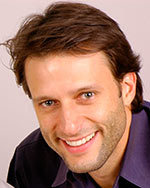
Dr Coachman graduated in Dental Technology in 1995 and in Dentistry at the University of São Paulo/Brazil in 2002. He is a member of the Brazilian Academy and Society of Esthetic Dentistry. Moreover, Dr Coachman attended the Ceramic Specialization Program instructed by Dr Dario Adolfi at the Ceramoart Training Centre, where he also became an instructor. In 2004, Dr Coachman was invited by Dr Goldstein, Garber, and Salama, of Team Atlanta, to become Head Ceramist of their laboratory, a position he held for over four years. He has been working with many leading dentists around the world such as Dr Van Dooren (Belgium), Gurel (Turkey), Fradeani (Italy), Bichacho (Israel) and Calamita (Brazil). Dr Coachman currently works as a consultant for dental offices and companies developing products and implementing concepts and has lectured and published internationally in the fields of esthetic dentistry, dental photography, oral rehabilitation, dental ceramics and implants.
This lecture will explore the influence of different prosthodontics parameters in the long-term outcome of implant-prosthodontic rehabilitations. Different treatment regulators such as such prosthetic design, loading protocols, retention mechanism, prosthodontics material, etc. will be presented based on the current evidence. Emphasis will be given to the importance of an appropriate implant-prosthodontic treatment planning in order to increase the long-term success and minimize the frequency and severity of complication. In this context, modern success criteria will be proposed.
The aims and objectives of this lecture are to present the current scientific and clinical evidence on the influence of different prosthodontics parameters and procedures affecting the success of implant-supported prostheses in the edentulous mandible and maxilla.
Learning Objectives
- To discuss the prosthodontic, biological and technical complications including full arch implant-prostheses with cantilevers
- To discuss the factors that affect the prosthodontic success and failures
- To critically review the evidence for different implant loading protocols in the partially & fully edentulous patients
- To briefly discuss the evidence on aesthetic outcome of restorations
- To briefly discuss the use of CAD CAM technology in implant prosthodontics and how these may develop in the future.
- To conclude with expert advice/tips on the topic.
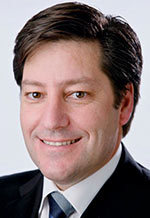
Dr Gallucci is the Head of the Division of Regenerative and Implant Sciences at Harvard School of Dental Medicine. He obtained his Doctorate in Dental Medicine at the department of Prosthodontics, School of Dental Medicine at the University of Geneva, Switzerland. Dr Gallucci actively participates in clinical research related to implant-prosthodontics and Digital Dentistry. His work has been published in International peer reviewed journals and is member of the editorial board for several scientific dental journals. Dr Gallucci participates as invited lecturer in international and national conferences and congresses. He is fellow of the International Team for Implantology (ITI), Switzerland, and is an active member of the Academy of Osseointegration (AO) - USA, European Academy of Osseointegration (EAO), and International Academy of Dental Research (IADR).
Restoring the atrophic jaw is a challenge for the prosthodontist. The prosthetic device has to replace the function and provide good aesthetics with long term reliability. Implant- supported removable dentures improve patients' quality of life significantly but the literature contains numerous publications on the complications, maintenance requirements and failures of this treatment modality.
The aim this presentation is to discuss the different implants-denture anchoring systems, its advantages and complications.
Learning Objectives
- To discuss the maintenance requirement of overdentures
- To discuss general complications of overdentures in the long-term
- To understand biomechanical advantages of different implants-denture anchoring systems
- To conclude by summarising advice and tips on the subject
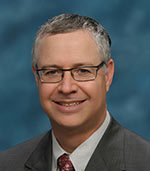
Dr Ormianer earned his dental degree (1988) at Tel-Aviv University. He continued at Tel-Aviv University to complete his clinical training in management of TMJ disorders (1991) and the post-graduate prosthodontics programme (1996). Dr Ormianer is a lecturer and director of the Implant & Esthetic Center of the Oral Rehabilitation Department in the University. Dr Ormianer is a member of numerous professional organisations and he is the founder and past president of the Israeli Association of Oral Implantology, board member of the Israel Society of Prosthodontics and is a member of the editorial board of Implant Dentistry. In his private practice, Dr Ormianer concentrates mainly on implant prosthodontics and has published more than 20 articles on this topic in various dental journals. Dr Ormianer has lectured internationally in the Middle East, Europe and the Americas.
The use of medical devices such as artificial joints and dental implants are always associated with risks. Before undergoing such interventions, the risks for failure or complications and chances of survival or success need to be carefully weighed by patients and professionals. Mechanical (related to prefabricated components) and Technical (laboratory constructed superstructures) risk factors play a major role in implant dentistry and should be carefully evaluated during the treatment planning stages. This lecture will present the evidence for common mechanical and technical complications and will discuss the risk management protocols for mitigating for these.
Learning Objectives
- To define mechanical and technical risks and introduce “risk management” strategy
- To present the current evidence on the influence of most common mechanical and technical complications
- To discuss specifically implant, abutment and superstructure related complications
- To discuss the role of important restorative factors including: screw vs cement retention, angled abutments, platform switching, prosthodontics materials incl zirconium, fixed implant supported prostheses incl retentive elements, implant crown ratios, bruxism, length, distribution and number of implants vs span of restorations
- To conclude with expert advice/tips on this topic
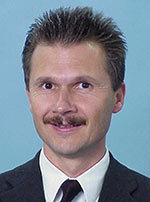
Professor Brägger is presently head of the Division of Fixed Prosthodontics, University of Bern, Switzerland, since 2008. Professor Brägger was the Executive Dean, School of Dental Medicine, University of Berne, Switzerland 1999 - 2003. He was also a Visiting Professor, Dept. of Diagnostic Systems University of Texas, Health Science Center San Antonio TX, USA and a Visiting Assistant Professor, Dept. of Periodontology at this same institution. He previously worked at the levels of Assistant Professor and Cinical Instructor in the Dept. of Crown and Bridge Prosthetics and Comprehensive Care, University of Berne, Switzerland. Among his accomplishments, he is or has been: an ITI member 1989- ; Specialist in oral implantology 2012; Specialist in reconstructive dentistry (SSRD) 2000; Medical manager FH 2002; and Specialist Periodontist (SSP) Swiss Society for Periodontology 1987. He received a Certificate in Crown and Bridge Prosthetics in 1984 and completed his Dr. med. dent. Thesis, University of Berne in 1982. He passed the Federal Board Examination for Dentists in 1980. Professor Brägger has been an Associate Editor Clinical Oral Implants Research. He is a member of the following Editorial Boards: Clinical Oral Implants Research, Journal of Clinical Periodontology, Oral Medicine Oral Pathology Oral Radiology, and Journal of Periodontology. He was the President of the Swiss Society for Dentomaxillofacial Radiology SDMFR from 1992-1996 and the President of the Swiss Society for Reconstructive Dentistry SSRD from 2000-2004. He is the Recipient of: Honorary Member of the Dept. of Periodontics; University of Texas Health Science Center (1986); Winner of the H.R. Mühlemann Research Prize(1986); Winner of the Jens Waerhang Research Prize (1989); and Winner of the Kiwanis Research Prize (1990). He has published approximately 150 articles. His special interests are: Perioprosthetics, Biology of dental implants, Image processing in maxillofacial radiography, Biomechanical aspects of suprastructures on implants, Development of CAD reconstructions on implants, Economics in dental medicine.
